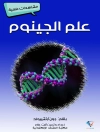The second edition of this book presents the role of osmolytes in human health and diseases. Some of the chapters deal about the possibility of the use of osmolytes as diagnostic biomarkers and potential drug design for neurodegenerative and other human diseases. Other chapters also include reviews on the role of osmolytes in cancer, metastasis, infectious diseases, metabolic disorders, immunological disorders, and tissue regeneration. Importantly, the book also contain recent updates on the role of naturally occurring osmolytes in protein folding pathway, protein stability, and their underlying mechanisms. The book also covers the aspects that osmolytes could promote conformational alterations of transcription factors that favor metastatic behavior. Potential of the osmolytes in the various process of vaccine development, including enhancing the efficacy, production, and purification steps are also succintly described. Towards the end, the book also elucidates the use of specific molecules for the prevention of toxic gain of functions and restoration of function to disease-causing mutant protein. This book is an invaluable asset for the researchers especially working in osmolyte biology and scientists involved in basic and clinical research particularly neurodegeneration, diabetes, cancer, and metabolic disorders.
Mục lục
Chapter 1_Protein folding pathways in the presence of osmolytes.- Chapter 2_Effect of Organic Osmolytes on protein folding Intermediates.- Chapter 3_Role of TMAO on folding behavior of various proteins associated with neurodegeneration.- Chapter 4_Osmolyte-Mediated Protein Stabilization: Unraveling Interactions Across Conformational Landscapes.- Chapter 5_Osmolytes as a promising therapeutic strategy for protein aggregation diseases.- Chapter 6_Involvement of osmolytes in the pathophysiology of various human diseases.- Chapter 7_Role of osmolytes in cancer.- Chapter 8_Harnessing the power of osmolyte for industrial and pharmaceutical applications.- Chapter 9_Diverse biological functions of Myoinositol: A neuro-metabolite, osmoprotectant and diagnostic marker.- Chapter 10_Potential of osmolytes as Diagnostic Biomarkers in various Diseases.- Chapter 11_Osmolytes as stress sensors in plants: Acclimatizing plants under stress conditions.
Giới thiệu về tác giả
Laishram Rajendrakumar Singh is a pioneer in the field of osmolyte research. He has made several landmark contributions in understanding protein folding mechanism by osmolytes and harnessing the basic knowledge in designing strategies for the therapeutic intervention of human diseases caused by protein folding defects. He obtained his doctoral degree (in the year 2006) from Jamia Millia Islamia, New Delhi from where he begins his research on osmoprotectants, unveiling their role in protein folding landscape and thermodynamics of protein folding. He then expanded his expertise during his postdoctoral studies at Fox Chase Cancer Cancer, Philadelphia by employing these molecule for restoring functions to disease causing mutant proteins related to homocystinuria. Nowadays, metabolomic studies has further expanded the repertoire of osmolytic molecules that are upregulated or downregulated under various disease conditions including neurodegenerative diseases. Presently, at the University of Delhi, he is engaged on identifying specific brain osmolytes that could regulate the functional activity of important target enzymes of Dementia including, acetylcholinesterase and carbonic anhydrase. He is also interested in using these osmolytes to to correct folding defects of some of the folding deficient brain proteins including, Aβ, α-synuclein, transthyretin whose toxic inclusions are the emblematic signatures of Dementia. He has published more than 85 articles related to the avenue “osmolyte research” in various journals of high international repute. He is a prolific reviewer, guest editors, and is in the editorial board members of prestigious journals.
Tanveer Ali Dar is currently working as Associate Professor, in the Department of Clinical Biochemistry, University of Kashmir. After completing doctoral degree from Jamia Millia Islamia, New Delhi, he joined as post-doctorate in Prof. Bruce Bowler’s lab at University of Montana, Missoula, USA. His research focus mainly includes modulation of aggregation of globular as well as Intrinsically disordered proteins by chemical chaperones/osmolytes and the structural-functional characterization of biologically active proteins from medicinal plants. He has authored more than 60 publications in both national and international journals of repute in the field of protein biophysics and medicinal plant proteomics. Moreover, he has to his credit a couple of edited volume books published by international publishers. Dr. Dar is a recipient of Indian National Science Academy visiting fellowship and is member of various international and national scientific societies like ASBMB, Canadian Society of Molecular Biosciences, National Academy of Sciences, India; Proteomics society of India, India Biophysical society etc.
Kritika Kumari is presently working at the Dr. B. R. Ambedkar Center for Biomedical Research, University of Delhi. She is an excellent biochemist whose research focus is to explore the cross-talk between gut microbiota and protein folding behavior. She utilizes various biophysical, biochemical and cellular approaches to study the folding behavior of proteins having slow folding kinetics in the presence of various gut-derived metabolites. She is also interested in understanding the nature of proteotoxicity caused by unwanted post-translational modifications including glycation, homocystinylation etc. One of her landmark contribution is that trimethylamine N-oxide (a metabolite largely obtained from poultry and fishes) is a protein folding inhibitor specifically, proline-rich proteins by affecting the cis/trans isomerization. This has showcased a primary basis for food habits in human diseases. She has also contributed to the role of other cellular metabolites in effecting better vaccine production, suppressing protein aggregation, and restoring function to disease-causing mutant proteins. She has published more than 10 research articles in highly reputable journals and is a reviewer of various journals.












